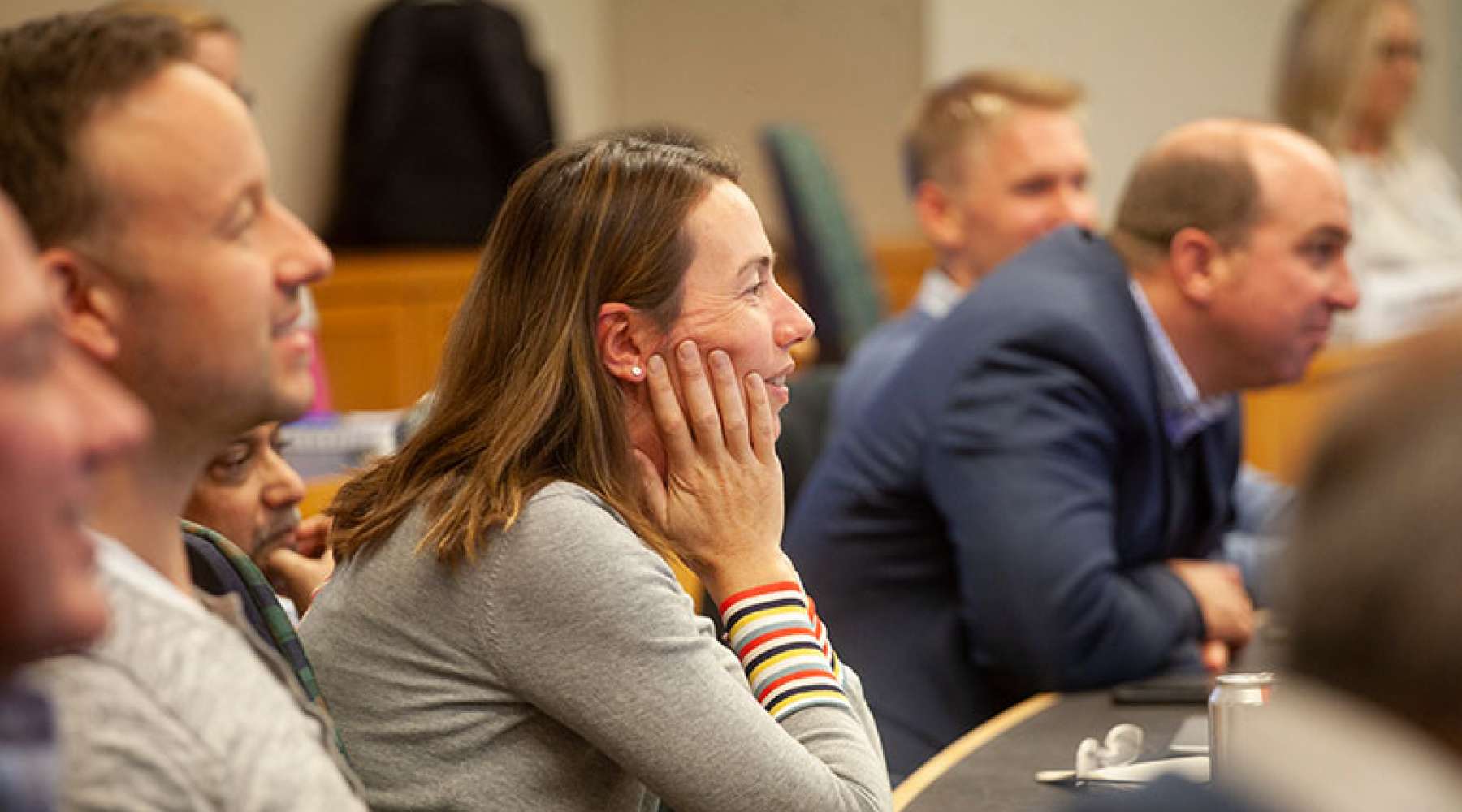
This fall, Tuck’s Center for Private Equity and Venture Capital hosted its 2018 Research Conference, an annual gathering of academics, practitioners, and students from around the world focused on advancing interdisciplinary research across finance, organizations, private equity, venture capital, and entrepreneurship. Attendees hailed from London (Oxford), Amsterdam, Canada (UBC), and around the U.S. including Duke, Harvard Business School, Maryland, NYU, Ohio State, Stanford, and the University of Southern California. Leading edge topics covered machine learning applied to evaluating VC pitches in pitch competitions, cloud computing and the performance of young firms, and lending practices associated with fintech.
The two-day event, held in October 2018, featured author-led presentations of academic papers followed by an independent discussant’s assessment, fostering lively debate. The first keynote address was given by Professor Antoinette Schoar of the MIT Sloan School of Management, exploring the performance of alternative investment vehicles within private equity. The second was given by Professor Thomas Hellman of the University of Oxford Saïd School of Business, on fundraising strategies in equity crowdfunding campaigns.
The first day featured discussions of five papers. The first, entitled, “Who Creates New Firms When Local Opportunities Arise?” was presented by Professor Shai Bernstein of the Stanford Graduate School of Business. The paper found that firm creation in response to demand shocks is driven almost entirely by young individuals with generalist and managerial skills. There was almost no such response among older skilled individuals. Dr. Bernstein and his colleagues also found that entrepreneurs who respond to local demand shocks are younger and more skilled than the average entrepreneur. The authors looked at the Brazilian agribusiness sector for this study due to the rich employee-level data captured by the Brazilian Ministry of Labor and the abundant instances of local demand shock within agriculture due to global commodity price fluctuations. The findings suggest meaningful impacts of local population characteristics on an economy’s entrepreneurial responsiveness. The four other papers covered the distributional effects of fintech credit, the performance of young firms in the age of cloud computing, the linkages between employment protection practices and process innovations, and entrepreneurial spillovers from corporate R&D.
The second day covered six papers; the first examined management practices in mergers and acquisitions, finding that spillovers of good management practices constitute an important source of synergy in M&A. The second paper examined impacts of STEM versus non-STEM CEOs on firm management style and outcomes. The remaining papers of the day covered intellectual property sales during bankruptcy, methods for estimating the magnitude organizational capital within firms, the impacts of France’s regulatory changes easing firm access to credit, and the ability of machine learning models to mimic and outperform human judgment in new venture financing.
A comprehensive list of the conference’s academic papers, presenters, co-authors, discussants, and keynote speakers as well as links to the papers can be found here.